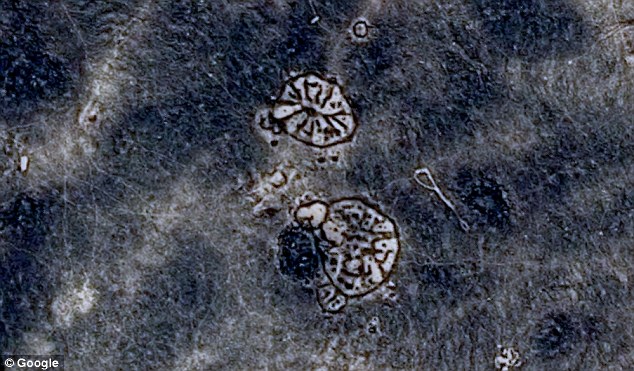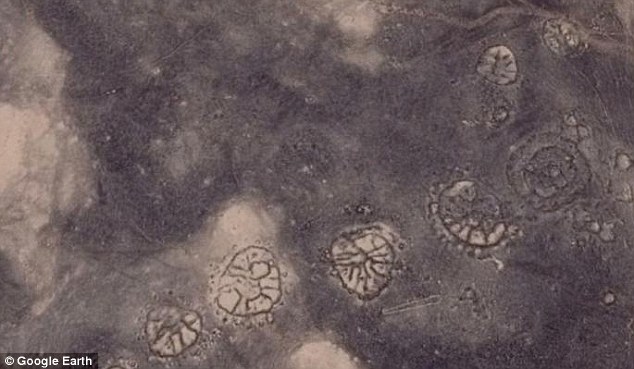Peru is known for many mysterious cave drawings and geoglyphics from past populations. The Nazca Lines that were found etched into the desert are believed to have been drawn nearly 2,500 years ago. But recently geoglyphics have been found in the Middle East that are more than 6,000 years older than the Peruvian ones.
The etchings are two wheel-shaped patterns that were drawn in the Wadi Wisad in the Black Desert of Jordan 8,500 years ago. Other wheels that look the same as the Wadi Wisad have been found nearby in other places like the Azraq Oasis.
Researchers and archaeologists are not sure who made the sculptures or why they are in the shape of wheels. Another mystery is why there are several areas with the same kind of sculptures. Some archaeologists believe that the sculptures were placed and built to align the sunrise on the day of the winter solstice.
The Jordanian markings and sculptures were spotted from the air by Lieutenant Percy Maitland, a WWI pilot. He wrote about them in a journal he published in 1927. He stated that the sculptures and drawings included wheels, kites, pendants, and meandering walls. He noticed that the etchings and sculptures ranged in sizes. The shapes would have been visible only from the air.
New geoglyphs that have been found suggest that the entire Arabian region from Syria to Jordan and from Saudi Arabia to Yemen all have some kind of geoglyph. In order to date when the wheels were made, researchers and archaeologists used a technique called optically stimulated luminescence. The optical dating is done by determining how long ago materials were exposed to daylight. Scientifically, it measures the energy of the photons still being released on the artifacts. Exposure to sunlight bleaches the luminescence signal. However, over time the luminescence signal increases when it is exposed to the ionizing radiation and cosmic rays.
By using this technique, the researchers were able to determine that one wheel was built about 8,500 years ago when the climate was wetter in some parts of the Middle East. The other one was made around 5,500 years ago. Having found charcoal in two hearths in a building, researchers and archaeologists believe that people lived in the Wadi Wisad as far back as 6,500 BC.
700 geoglyphs have been discovered on the Nazca Plain in Peru in 1939, and are believed to have been drawn by the ancient Nazca people between 500 BC and 500 AD. Around 70 depict animals, birds, and insects along with geometric shapes. Most of the lines that make up the shapes and geoglyphs are formed by making small trenches between four and six inches. They are made by removing the reddish-brown iron oxide pebbles that actually cover the surface of the Nazca desert which then exposes the light colored sand and earth beneath it.
One professor suggests that certain wheels were made intricately while others were simple and rigid. Some believe the Azraq Oasis etchings had astronomical purpose because the spokes on the wheels seem to align with the sunrise during winter solstice. Other wheels with cairns may have been made more elaborately because they were burial mounds, and greater care was used in making the cairns put of respect for the dead.
Scientists and archaeologists note that it’s perplexing why the people would make monuments that are only seen from the sky – perhaps it was because only gods were meant to see them. One professor in Western Australia suggests that people may have walked on top of the monuments and even walked right past them without even noticing the value of them.
But monuments are clearly seen from space. The space images revealed more than 260 shapes in various places around the world. Two include a swastika and cross that are etched into a steppe of Kazakhstan.

